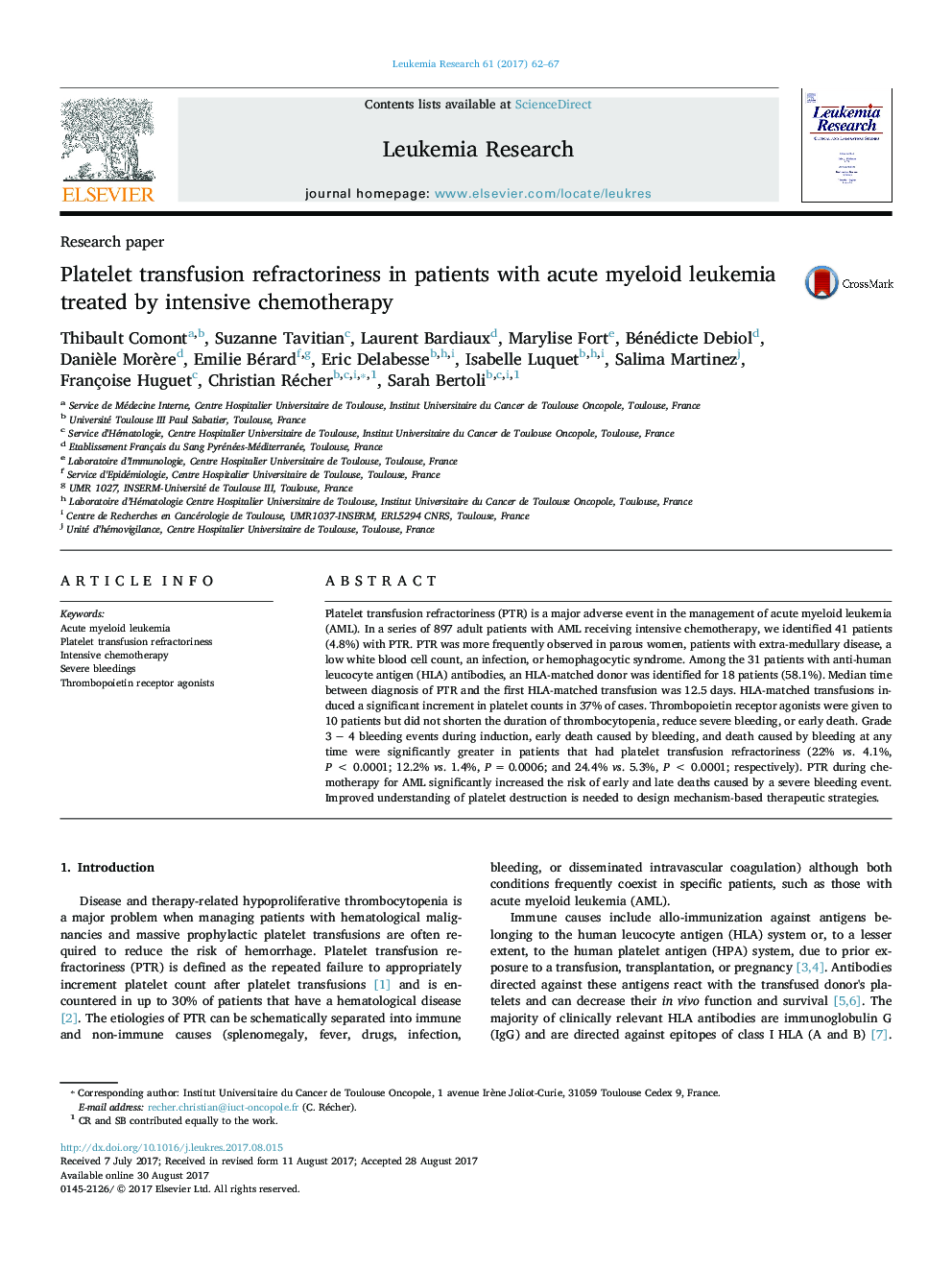| Article ID | Journal | Published Year | Pages | File Type |
|---|---|---|---|---|
| 5527763 | Leukemia Research | 2017 | 6 Pages |
â¢We identified a high risk population to develop PTR.â¢PTR during chemotherapy for AML increased the risk of deaths by a bleeding event.â¢Thrombopoietin receptor agonists did not reduce severe bleeding, or early death.
Platelet transfusion refractoriness (PTR) is a major adverse event in the management of acute myeloid leukemia (AML). In a series of 897 adult patients with AML receiving intensive chemotherapy, we identified 41 patients (4.8%) with PTR. PTR was more frequently observed in parous women, patients with extra-medullary disease, a low white blood cell count, an infection, or hemophagocytic syndrome. Among the 31 patients with anti-human leucocyte antigen (HLA) antibodies, an HLA-matched donor was identified for 18 patients (58.1%). Median time between diagnosis of PTR and the first HLA-matched transfusion was 12.5 days. HLA-matched transfusions induced a significant increment in platelet counts in 37% of cases. Thrombopoietin receptor agonists were given to 10 patients but did not shorten the duration of thrombocytopenia, reduce severe bleeding, or early death. Grade 3 â 4 bleeding events during induction, early death caused by bleeding, and death caused by bleeding at any time were significantly greater in patients that had platelet transfusion refractoriness (22% vs. 4.1%, P < 0.0001; 12.2% vs. 1.4%, P = 0.0006; and 24.4% vs. 5.3%, P < 0.0001; respectively). PTR during chemotherapy for AML significantly increased the risk of early and late deaths caused by a severe bleeding event. Improved understanding of platelet destruction is needed to design mechanism-based therapeutic strategies.
